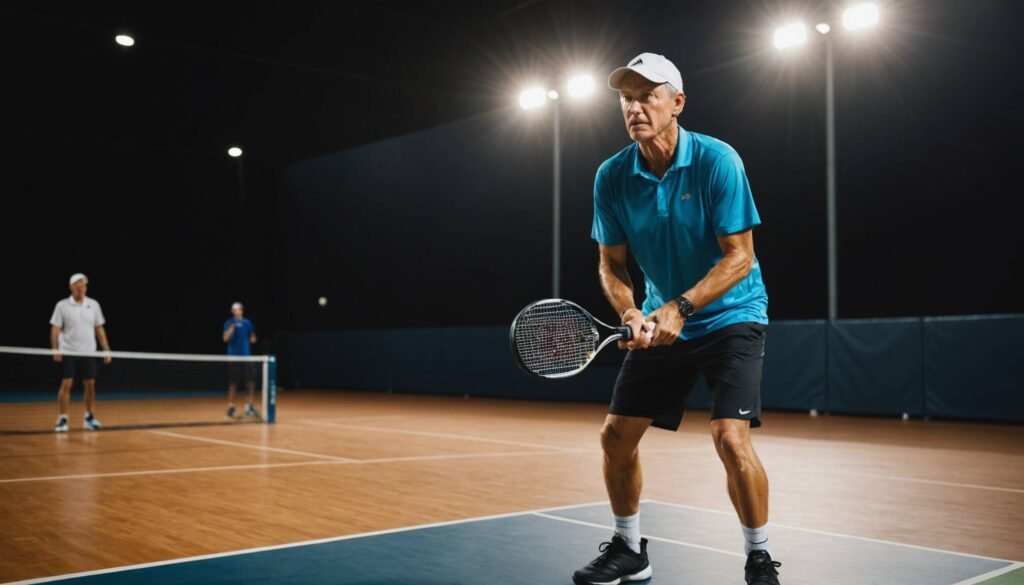Understanding the 2025 Pickleball Paddle Drama at PPA Cincinnati
The Great Paddle Shakeup of 2025
The professional pickleball world was thrown into disarray at the PPA Cincinnati tournament when numerous top players found themselves unable to use their preferred paddles. This unprecedented situation stemmed from new testing standards implemented by the United Pickleball Association of America (UPA-A), which took effect on September 1, 2025. The impact has been significant, affecting players from major brands including JOOLA, Selkirk, Proton, Paddletek, and ProXR.
Understanding the New UPA-A Standards
For those new to pickleball or unfamiliar with equipment regulations, the UPA-A’s new testing protocol represents a fundamental shift in how professional pickleball equipment is regulated. To compete in professional events, paddles must now appear on the official approved list. This list currently includes 85 paddles, but notably excludes several popular models used by top professionals.
Key Missing Paddles Include:
- Franklin Dynasty (Parris Todd’s signature model)
- JOOLA Scorpeus Pro IV 16mm
- Multiple Paddletek 12.7mm models
- PIKKL signature models for Gabe Tardio and Tyra Black
- Most Selkirk models except three specific versions
- The popular Proton Flamingo
The Technical Side: Testing Parameters
The UPA-A’s new testing framework focuses on three critical aspects:
1. Spin Measurement
This evaluates the ball’s RPMs off the paddle face, considering factors like surface texture, shape, and core construction. The testing ensures consistent and fair play by limiting excessive spin capabilities.
2. Power Evaluation
Using the Paddle Efficiency Factor (PEF), testers measure how efficiently a paddle transfers energy to the ball. New paddles must meet a 0.385 PEF standard and cannot exceed 0.405 after break-in procedures.
3. Durability Testing
Through the Artificial Break-In (ABI) Standard, paddles undergo controlled stress testing to simulate extended use, ensuring they maintain legal performance levels over time.
The Proton Flamingo Case Study
One of the most notable absences from the approved list is the Proton Flamingo, a paddle favored by numerous top professionals including Andrei Daescu, CJ Klinger, and Genie Bouchard. According to Charles Darling, Proton’s founder and president, their strategy was to submit their highest-performing Flamingo for testing, hoping to secure approval for the most potent version possible.
However, this approach encountered unexpected challenges. The testing process proved longer than anticipated, with each model requiring approximately four weeks for evaluation. Failed tests meant returning to the back of the queue, creating significant delays in the certification process.
Impact on Professional Players
The situation has created considerable confusion and frustration among professional players. Many learned just days before the Cincinnati tournament that their preferred paddles weren’t approved, forcing last-minute equipment changes. As Hurricane Tyra Black noted on social media, some players found themselves at a major tournament without access to their usual equipment.
Looking Forward: The Future of Paddle Regulation
While the transition has been challenging, the UPA-A’s new standards represent a significant step toward ensuring fair play in professional pickleball. The implementation of unique model numbers for certified paddles allows for better tracking and enforcement of standards. This system helps prevent unauthorized modifications and ensures consistency across all professional events.
For the Average Player
While these regulations primarily affect professional play, recreational players should understand their implications. The standards set at the professional level often influence the broader market and could eventually impact amateur competition. Players at all levels might want to consider these regulations when purchasing new equipment, especially if they plan to participate in sanctioned tournaments.
The Bottom Line
Despite the current challenges, industry leaders like Proton’s Charles Darling support the UPA-A’s efforts, recognizing that establishing clear standards will benefit the sport in the long run. As the testing process becomes more streamlined and manufacturers adapt to the new requirements, the professional pickleball community should see more stability in equipment regulations.



